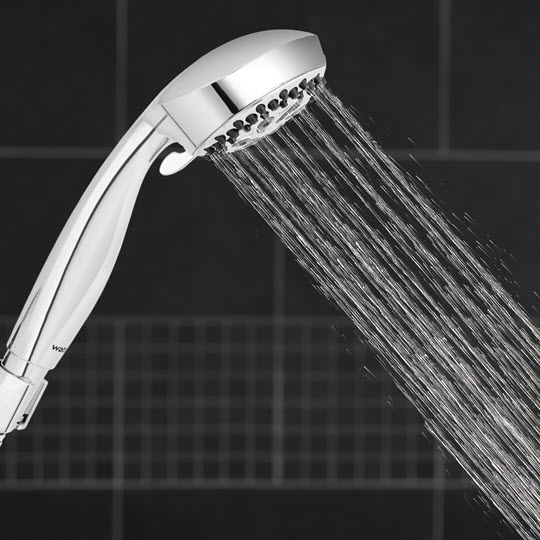Introduction
When it comes to eco-friendly choices in our daily lives, installing a low-flow showerhead is a small change that can make a big impact. These innovative bathroom fixtures offer a host of benefits, from conserving water and reducing energy consumption to saving you money on utility bills. In this article, we’ll dive deep into the world of low-flow showerhead benefits, exploring how they work, why they matter, and why you should consider making the switch.
Understanding Low-Flow Showerheads
Low-flow showerheads, as the name suggests, are designed to deliver a reduced flow of water compared to traditional showerheads. They achieve this by incorporating various technologies that limit the water flow while maintaining a satisfying shower experience. The primary goal is to reduce water waste without compromising on the quality of your shower.
Benefits of Low-Flow Showerheads
Let’s explore the multiple advantages of making the switch to a low-flow showerhead:
1. Water Conservation
One of the most significant benefits of low-flow showerheads is their water-saving capability. These fixtures can reduce water usage by up to 50% or more compared to standard showerheads. This conservation is not only beneficial for the environment but also for regions experiencing water scarcity.
2. Energy Savings
Less water flowing through your showerhead means less hot water is needed to maintain a comfortable shower temperature. Since heating water accounts for a significant portion of household energy consumption, using a low-flow showerhead can lead to substantial energy savings, ultimately reducing your energy bills.
3. Cost-Efficiency
Due to reduced water and energy usage, low-flow showerheads can save you money over time. While the initial purchase cost may be slightly higher than that of traditional showerheads, the long-term savings on water and energy bills more than compensate for the investment.
4. Environmental Impact
Conserving water and energy directly contributes to a smaller carbon footprint. By using a low-flow showerhead, you play a part in mitigating the environmental impact of excessive water and energy consumption.
5. Adequate Pressure and Comfort
Modern low-flow showerheads are designed to provide a satisfying shower experience by optimizing water pressure and flow. You can enjoy a comfortable and invigorating shower while still saving water and energy.
6. Compliance with Regulations
In some regions, the installation of low-flow showerheads is a requirement to meet water conservation regulations. By switching to a low-flow option, you ensure compliance with local laws and contribute to responsible water usage.
7. Lengthened Lifespan of Water Heater
Using less hot water not only saves energy but also extends the lifespan of your water heater. Reduced usage means less wear and tear on the heating element and other components, potentially delaying the need for repairs or replacements.
8. Easy Installation
Most low-flow showerheads are easy to install and can be done without the need for professional plumbing services. It’s a simple DIY project that can make a significant difference in your household’s resource consumption.
9. Diverse Design Options
Low-flow showerheads come in a variety of styles and designs, allowing you to choose one that complements your bathroom decor and meets your aesthetic preferences.
10. Adjustable Settings
Many low-flow showerheads offer adjustable settings, allowing you to customize your shower experience. You can switch between different spray patterns or adjust the flow rate to suit your needs.
How Do Low-Flow Showerheads Work?
Low-flow showerheads achieve their water-saving capabilities through various mechanisms:
1. Aerator
An aerator is a device that mixes air with the water flow, creating a softer and more voluminous spray. This aerated spray covers a larger surface area, ensuring efficient rinsing while using less water.
2. Flow Restrictor
Flow restrictors are small components that limit the amount of water passing through the showerhead. They can be adjusted to control the flow rate to your preference.
3. Pressure-Compensating Technology
Pressure-compensating low-flow showerheads maintain consistent water pressure, even as the flow rate decreases. This ensures that you still enjoy a satisfying shower experience despite using less water.
4. Water-Efficient Designs
Modern low-flow showerheads are engineered to optimize the distribution of water droplets, maximizing coverage and effectiveness. They use innovative spray patterns to ensure thorough rinsing.
Tips for Choosing and Installing a Low-Flow Showerhead
If you’re considering making the switch to a low-flow showerhead, here are some tips to help you choose and install the right one:
1. Check for Certifications
Look for low-flow showerheads that are certified by organizations like WaterSense or ENERGY STAR. These certifications ensure that the product meets specific water-saving and performance standards.
2. Consider Your Water Pressure
If you have low water pressure in your home, choose a low-flow showerhead that is designed to work effectively under these conditions.
3. Choose the Right Flow Rate
Low-flow showerheads come with different flow rates, typically measured in gallons per minute (GPM). Consider your water-saving goals and preferences when selecting the flow rate that suits you best.
4. Install Properly
Follow the manufacturer’s instructions carefully when installing your low-flow showerhead to ensure optimal performance. If you’re unsure, consult a professional plumber for assistance.
Conclusion
Low-flow showerheads are a simple yet effective way to reduce water consumption, conserve energy, and lower your utility bills—all while maintaining a satisfying and comfortable shower experience. By making this eco-conscious choice, you contribute to environmental conservation efforts and help address the challenges of water scarcity and energy consumption.
References:




